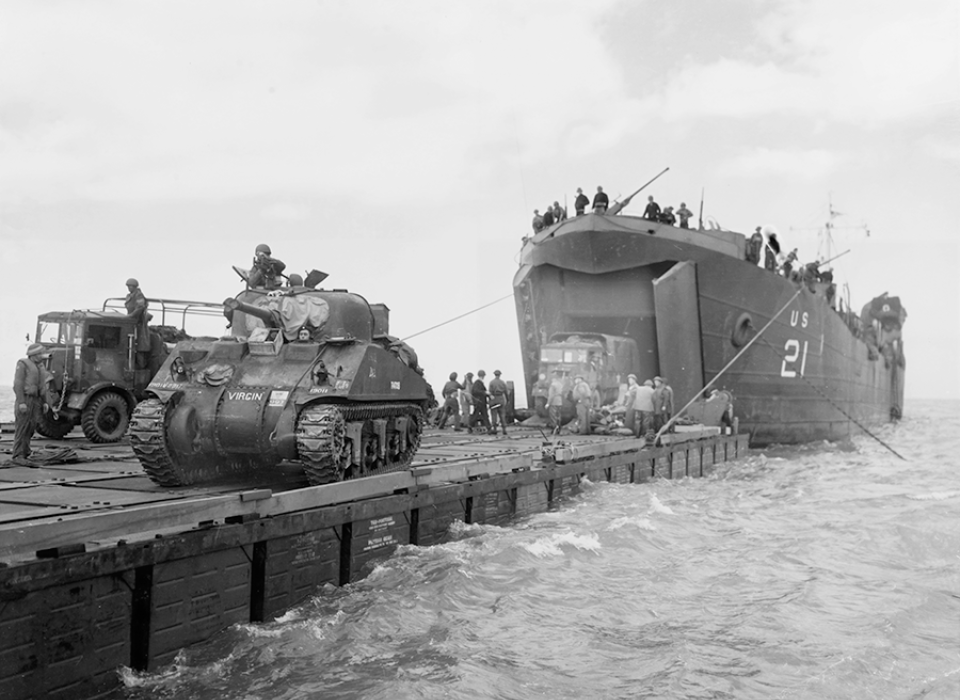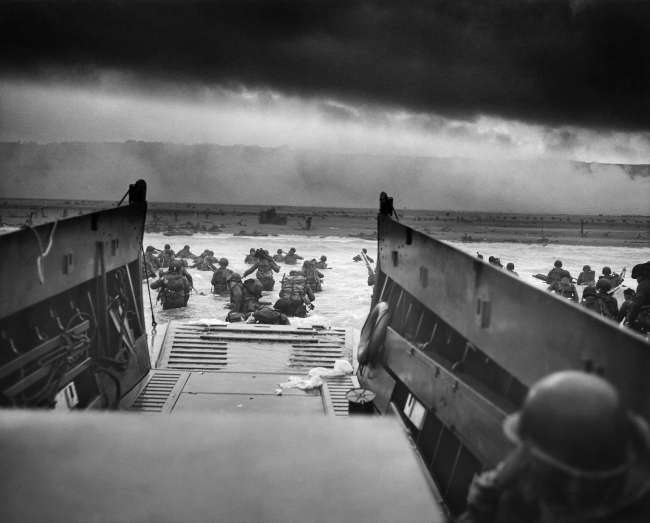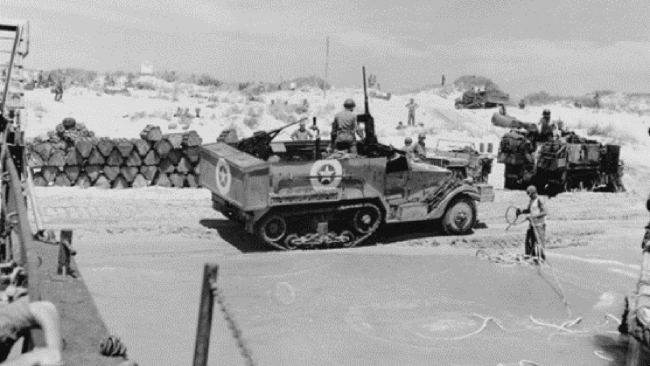Top Photo: Coast Guard-manned USS LST-21 unloads British Army tanks and trucks onto a Rhino barge during the early hours of the invasion, 6 June 1944. Photograph from the U.S. Coast Guard Collection in the U.S. National Archives.
Why did the Allies stage a landing in Western Europe in June of 1944?
Actually, as so often happens in war, they didn’t have any choice, not if they wanted to bring this long, bloody war to a close.
By 1944, the Axis was getting pounded on all fronts. Allied navies were supreme at sea. The great “global ocean” was theirs, along with a stranglehold on global resources. On land, Allied armies, backed by a huge array of industrial production, had proven they were more than a match for the German army. The Allies had overrun North Africa and Sicily, and even landed in Italy itself. Finally, in the third dimension of battle, the Allies had truly become “masters of the air.” Adolf Hitler may have built a “Fortress Europe,” but as Winston Churchill once sagely observed, the Führer “forgot to put a roof over it.” The destruction of German cities was just beginning, a process that would reach apocalyptic dimensions by early 1945.
So, in some sense, the Allies were “winning” World War II by 1944. They also knew—every responsible leader and commander—that ultimate victory would not come until the Americans and their Allied partners managed to land a powerful army on the West European coast. Here was the direct route into Germany, including the enemy’s own industrial heartland and population centers. Here was the only place where the Allies could, as General Eisenhower’s orders put it, “undertake operations aimed at the heart of Germany and the destruction of her armed forces.” So far, for all their successes, the Western Allies had taken points on the periphery. They hadn’t struck the Reich any sort of death blow. Sure, the Soviets were hammering the Germans hard by 1944, but the line on the Eastern Front still ran through places like Vitebsk and Orsha and Mogilev. The Red Army was, in other words, a good 800 miles from Berlin as the crow flies: a long, long way from victory.
No, if the US and its western Allies wanted to win this war as rapidly as possible, they couldn’t sit around and wait: not for a naval blockade, or for strategic bombing to work, or for the Soviets. They had to strike a direct blow on their own. They had to land in Western Europe, crack Hitler’s vaunted “Atlantic Wall,” and drive on into Germany.
And starting on June 6th, 1944, “D-Day” as we call it, that’s exactly what they did.
Robert Citino, PhD
Robert Citino, PhD, is the former Samuel Zemurray Stone Senior Historian in the Jenny Craig Institute for the Study of War and Democracy.
Cite this article:
MLA Citation:
APA Citation:
Chicago Style Citation:







![Max Fuchs, New York City cantor, sings as Rabbi Sydney [sic] Lefkowitz, Richmond, VA, conducts the first Jewish services from Germany.](/sites/default/files/styles/max_650x650/public/2025-10/image1.jpg)



